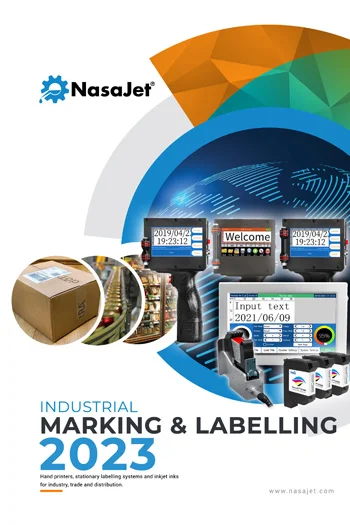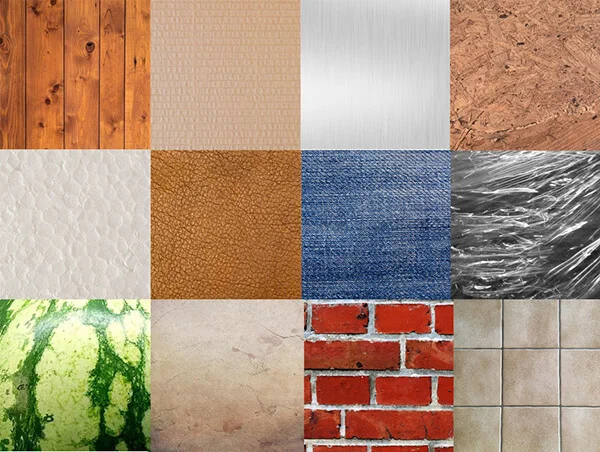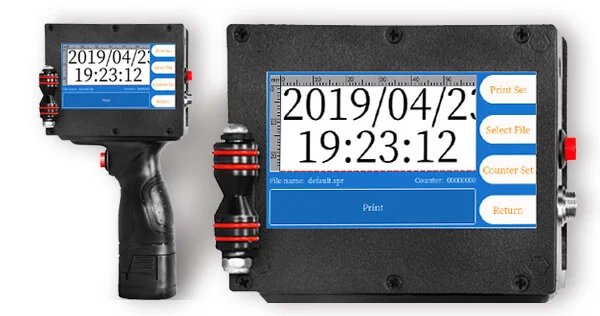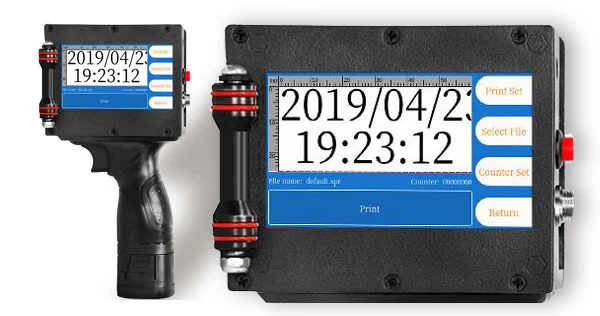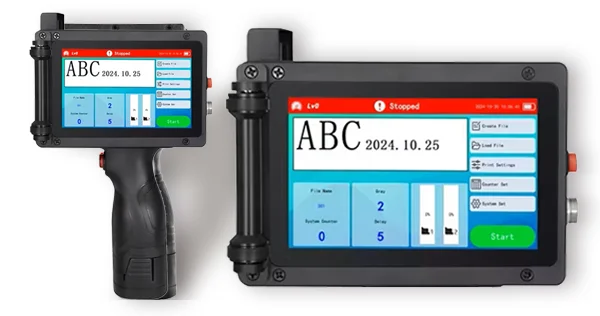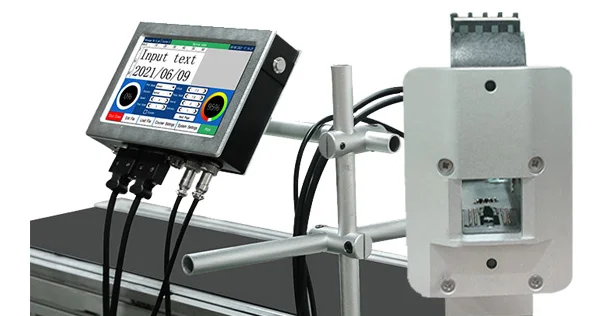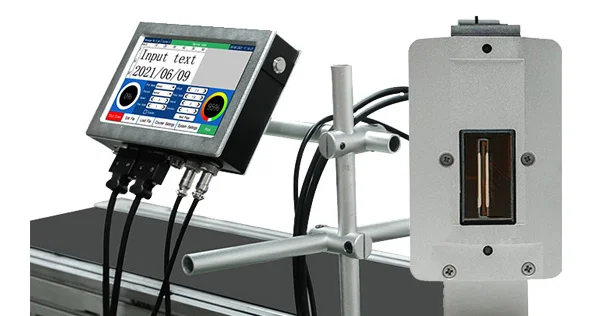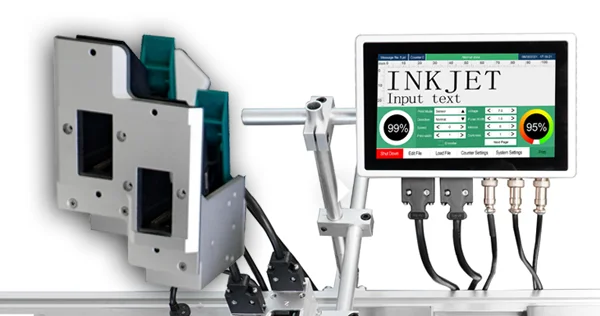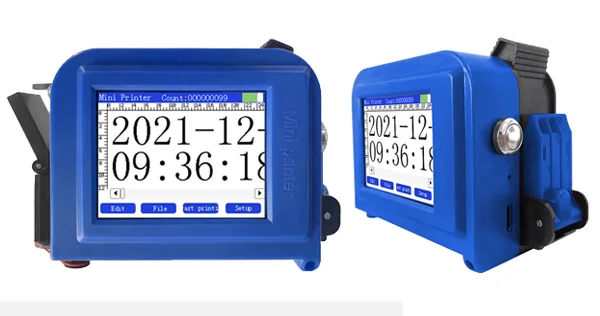-
Geotechtronics GmbH
Pollinger Str. 3 • D-82362 Weilheim i.OB -
Office hours
Mo-Sa: 9:00-18:00
Inkjet, inkjet, thermal inkjet, continuous inkjet,...?
Inkjet printers have become indispensable today. They provide fast, colourful printouts of documents or photos in the private sector and have also established themselves in the industrial sector in particular for fast and economical marking of goods and packaging. Many terms are used interchangeably when it comes to industrial labelling with ink. But inkjet labelling is actually not complicated at all.
Inkjet printer
Inkjet (inkjet printer, inkjet technology,...) is used as an umbrella term for technologies that print or label using ink. The technology developed almost simultaneously with home computers and the advent of the PC. While dot matrix printers dominated the home sector in the 1980s (operating principle similar to that of the classic typewriter), inkjet printers were already spreading rapidly in the commercial sector. The breakthrough of laser printers also triggered the widespread use of inkjet printers, as they were the best solution for colour printing as an alternative to laser printers, which were initially only monochrome and later very expensive for colour printing.
Drop-on-demand printer
Drop-on-demand summarises the inkjet technologies in which the nozzle ejects an ink droplet precisely when the print image requires it. On the other hand, there are continuous inkjet processes in which a continuous inkjet is deflected electrically and projected onto the substrate as required.
Continuous Inkjet printer
Continuous inkjet is an inkjet technology in which - in contrast to thermal inkjet - a constant ink jet is generated (usually piezo technology). The individual ink droplets also receive an electrical charge, which is used to direct them onto the carrier material with the help of electrode deflection plates (similar to tube televisions). Unused ink is fed back into the ink supply. Continuous inkjet is characterised by extremely high processing speeds. The disadvantages of continuous inkjet (CIJ) are the higher service and maintenance costs, as well as the need for solvents for quick-drying processes.
Thermal Inkjet printer
So what is Thermal inkjet? In the nozzles of thermal inkjet systems (thermal inkjet printers, sometimes also called thermal inkjet), tiny, electrically controllable heating elements ensure that the ink they contain heats up considerably (up to 300°C) and thus changes its aggregate state to gaseous. This leads to an increase in the occupied volume and thus builds up pressure in the nozzle. The high pressure at the tip of the nozzle ensures that ink droplets are pressed out at very high speed and are thus projected over a distance of several millimetres onto the carrier material (substrate). By subsequently reducing the temperature in the heating element, the ink returns to its liquid state. The volume is reduced and new ink can flow in. Thermal inkjet allows very high frequencies (up to 1500 Hz) for this process, which results in the very high processing speed of these systems. In the past, the technology was generally referred to as "bubblejet". Today, however, the term is only used to differentiate the technology from piezo systems, for example.
Thermal inkjet cartridges are standardised and have either a 1/2 inch (approx. 12mmm) or 1 inch (approx. 24mm) print head. However, TIJ inkjet cartridges and printer cartridges are sometimes coded in practice, so that not every cartridge will necessarily work in every device. Buyers must clarify this accordingly.
Advantages of Thermal Inkjet
- Simple and robust mechanics and electronics. Virtually maintenance-free
- High-quality print results (especially for barcodes and QR codes)
- Favourable acquisition and operating costs
- Almost any substrates (printing surfaces) possible
- Concave and convex surfaces can also be printed thanks to contactless printing
- Easy integration into existing production systems or processes (compact design)
Disadvantages of Thermal Inkjet
It is not easy to explain the disadvantages of the thermal inkjet process. The technology is simple but also robust and economical. One possible disadvantage would be the rather small filling quantity of the TIJ cartridges with only 42ml. In mobile use, this naturally limits the application time until a cartridge change is necessary. However, this can be carried out very quickly. In stationary use, this "disadvantage" can even be completely avoided with the help of bulk systems (bulk inks).
(Thermal inkjet should not be confused with so-called thermal printers. These do not actually "print", but rather use special paper - thermal paper - which is discoloured by heat at certain points. This technology is often used in cash register systems or fax machines. The biggest disadvantage here: Thermal paper fades very badly over time until it becomes completely illegible)
Piezo printer
The piezo process was developed and patented by the manufacturer Eposon, which still uses it today. The piezo effect utilises crystals or ceramics that expand or contract when a voltage is applied. The expansion causes ink to be squeezed out of the nozzle. The contraction ensures that new ink can flow in. In practice, piezo printing is characterised by the fact that its inks do not require the addition of water, the ink does not have to be explicitly developed for thermal behaviour and the processing of pigment-based inks is simpler.
So which is the better inkjet labelling? Which is better - thermal inkjet or inkjet?
There is no such thing as the optimum printing technique, especially not in industrial applications. All technologies have their advantages and disadvantages. Thermal inkjet has established itself in many areas of industrial labelling because it offers outstanding print quality at predictable costs. The ease with which inks can be replaced or the possibility of undercut-free printing using bulk systems was also a decisive factor in the breakthrough of this technology.






